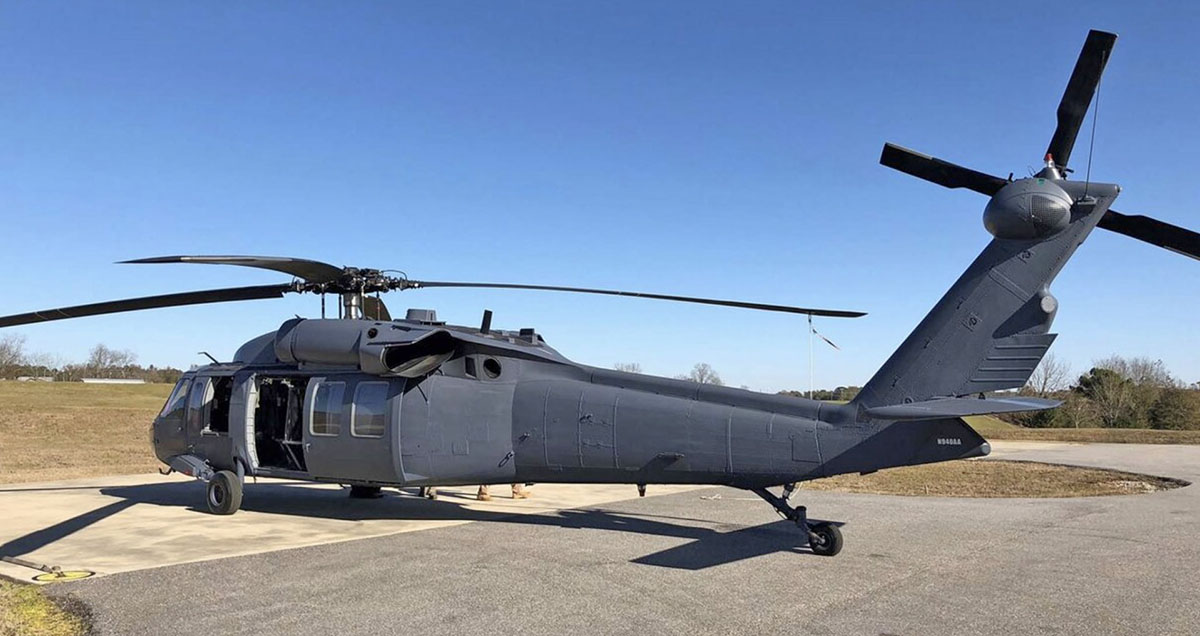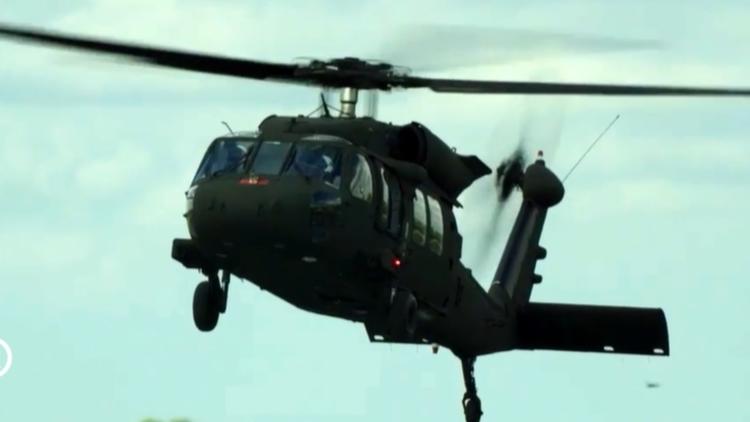The Evolution of the UH60 Blackhawk Helicopter from Its Very First Release to Today
The Evolution of the UH60 Blackhawk Helicopter from Its Very First Release to Today
Blog Article
Vital Parts of the UH60 Blackhawk Helicopter and Their Roles in Helicopter Operation

The UH-60 Blackhawk helicopter is a diverse airplane, defined by several crucial elements that play vital duties in its functional effectiveness. From its innovative rotor system that enhances the rules of aerodynamics to the dependable T700-GE-701C engines ensuring peak efficiency, each component is intricately developed to meet details functions. The advanced avionics collection boosts navigation and interaction, while the durable airframe and tri-cycle landing gear add to its convenience throughout numerous missions. Comprehending these parts is essential, as they collectively form the helicopter's capabilities in diverse settings and circumstances. What effects do these features hold for objective success?
Blades System

The rotor blades are built from sophisticated composite materials, permitting minimized weight and enhanced toughness - UH60 Blackhawk Helicopter. The cutting-edge layout integrates a totally verbalized rotor head, which promotes receptive and smooth handling by allowing blade feathering and waving. This flexibility is critical for maneuvering in different operational settings, including hilly and urban surfaces
The tail rotor, placed at the back of the aircraft, combats the torque created by the major rotor, guaranteeing directional control. It employs a two-blade style that lessens drag while offering reliable yaw control. The rotor system's efficiency and reliability add dramatically to the Blackhawk's total efficiency, making it an important property for different army and noncombatant missions. The integration of sophisticated technology in the rotor system emphasizes the Blackhawk's status as a formidable and versatile helicopter in modern-day aviation.
Engine Components
Effective and effective engine elements are basic to the performance of the UH60 Blackhawk helicopter. At the core of its operation are the T700-GE-701C turboshaft engines, which offer the needed thrust and reliability for different missions. Each engine produces about 1,800 shaft horse power, making it possible for the helicopter to perform in diverse settings and problems.
The engine's layout includes a multi-stage axial and centrifugal compressor, which enhances air movement and boosts general efficiency. This is matched by the use innovative materials and cooling down innovations, guaranteeing that the engine operates properly also under high-stress scenarios. The dual-engine arrangement supplies redundancy, improving security and functional capacity in case of an engine failing.
Additionally, the engine control system plays a crucial duty in handling engine performance, changing fuel circulation and other criteria to preserve optimum operation. Integrated health and wellness tracking systems constantly evaluate engine standing, giving real-time data that aids in maintenance and operational decision-making.
Avionics Suite
Central to the operational abilities of the UH60 Blackhawk helicopter is its advanced avionics suite, which incorporates innovative navigation, communication, and flight control systems. This suite improves situational recognition and operational performance, allowing pilots to execute complex objectives in diverse environments.
The Blackhawk's avionics suite includes a digital flight control system that automates numerous flight tasks, reducing pilot work and raising security throughout vital procedures. The system consists of a multi-function display screen that offers real-time data on airplane mission, navigation, and performance criteria, allowing informed decision-making.

Moreover, the collection is furnished with sophisticated weather condition radar and surface awareness systems, enhancing functional abilities in adverse weather. The mix of these technologies ensures that the UH60 Blackhawk can successfully execute a variety of goals, from army transport to clinical discharge, while preserving a high level of safety and security and dependability.
Airframe Structure
A durable airframe framework is important for the UH60 Blackhawk helicopter, making sure sturdiness and performance sought after operational linked here atmospheres. The airframe is built from innovative composite products and aluminum alloys, which supply a desirable strength-to-weight ratio. This style lessens general weight while maximizing architectural stability, crucial for the helicopter's dexterity and gas efficiency.
The airframe's style also integrates functions that enhance survivability and lower upkeep demands. For circumstances, making use of safety finishings and corrosion-resistant products helps mitigate use from environmental direct exposure. Furthermore, the airframe's modular design allows for much easier upgrades and repair services, adding to the helicopter's longevity and functional preparedness.
Aerodynamically, the airframe is streamlined to decrease drag, enabling the Blackhawk to attain excellent speed and maneuverability - UH60 Blackhawk Helicopter. The fuselage's configuration supports various mission profiles, from troop transport to medical evacuation, by providing sufficient area for workers and equipment while preserving stability during flight
Touchdown Gear
While the airframe of the UH60 Blackhawk gives essential architectural support, the touchdown equipment plays a crucial role in guaranteeing risk-free procedures during ground, landing, and takeoff maneuvers. The UH60 is outfitted with a tri-cycle landing equipment system, consisting of two major wheels and a tail wheel, which offers security and equilibrium when the helicopter is on the ground.
The major wheels are made to take in shock during touchdown and help with smooth taxiing cab on various surface areas. The gear's robust style permits the helicopter to endure considerable pressures run into throughout harsh landings or ground operations. Additionally, the wheels are fitted with tires that provide superb grip, making certain trustworthy performance in varied environments, consisting of soft or uneven terrain.

Conclusion
In summary, the UH-60 Blackhawk helicopter's functional performance is attributable to its important parts. The rotor system enhances the rules of aerodynamics, while the dual-engine setup offers required power and safety and security. Advanced avionics streamline navigating and interaction, consequently lowering pilot workload. The robust airframe makes certain longevity and strength, and the tri-cycle touchdown equipment uses stability for functional touchdown problems. Jointly, these elements add to the helicopter's capability to carry out a large range of goals successfully.
The rotor system of the UH60 Blackhawk helicopter is a vital Find Out More element that runs with remarkable efficiency. The combination of sophisticated technology in the blades system underscores the Blackhawk's standing as a powerful and functional helicopter in modern air travel.
Effective and effective engine parts are essential to the efficiency of the UH60 Blackhawk helicopter.A durable airframe framework is essential for the UH60 Blackhawk helicopter, guaranteeing sturdiness and performance in demanding functional environments. UH60 Blackhawk Helicopter. In general, the touchdown gear of the UH60 Blackhawk is a vital element that enhances functional safety and effectiveness, sustaining the helicopter's flexibility in numerous mission accounts
Report this page